Building an eco-friendly chicken coop is an essential step toward sustainable farming. Not only does it support the health and well-being of the chickens, but it also minimizes the farm’s environmental impact. With growing awareness of climate change and sustainable agriculture, more farmers are looking to adopt greener practices. This guide provides a comprehensive approach to constructing an eco-friendly chicken coop, covering everything from choosing the right materials to efficient energy use, sustainable designs, and ongoing maintenance. Whether you are a beginner or an experienced organic farmer, these sustainable tips will help you create a healthier environment for your flock and the planet.
Planning Your Eco-Friendly Chicken Coop

Flowchart: Eco-Friendly Coop Planning Process.
Location Selection: Selecting the right location is the first step in building an eco-friendly chicken coop. Look for an area with good drainage to prevent waterlogging, which can lead to dampness and disease. The coop should also receive ample sunlight, as natural light is essential for chickens’ health and productivity. Consider placing the coop near shade-providing trees to maintain a comfortable temperature during hot weather.
Sustainable Design: Designing the coop with sustainability in mind involves several considerations:
- Space Allocation: Allow at least 3-4 square feet per chicken inside the coop and 8-10 square feet in the run area to reduce stress and promote natural behavior.
- Passive Solar Design: Orient the coop to maximize natural sunlight, especially during colder months. Install windows facing south to allow sunlight to warm the coop naturally.
- Flowchart for Coop Design: Add a simple flowchart showing steps in planning an eco-friendly coop design, starting from site selection to material sourcing.
- Additional Study: For additional sustainable coop designs, visit The Poultry Site. Explore more sustainable practices at Sustainable Agriculture Research & Education (SARE).
Materials for an Eco-Friendly Chicken Coop
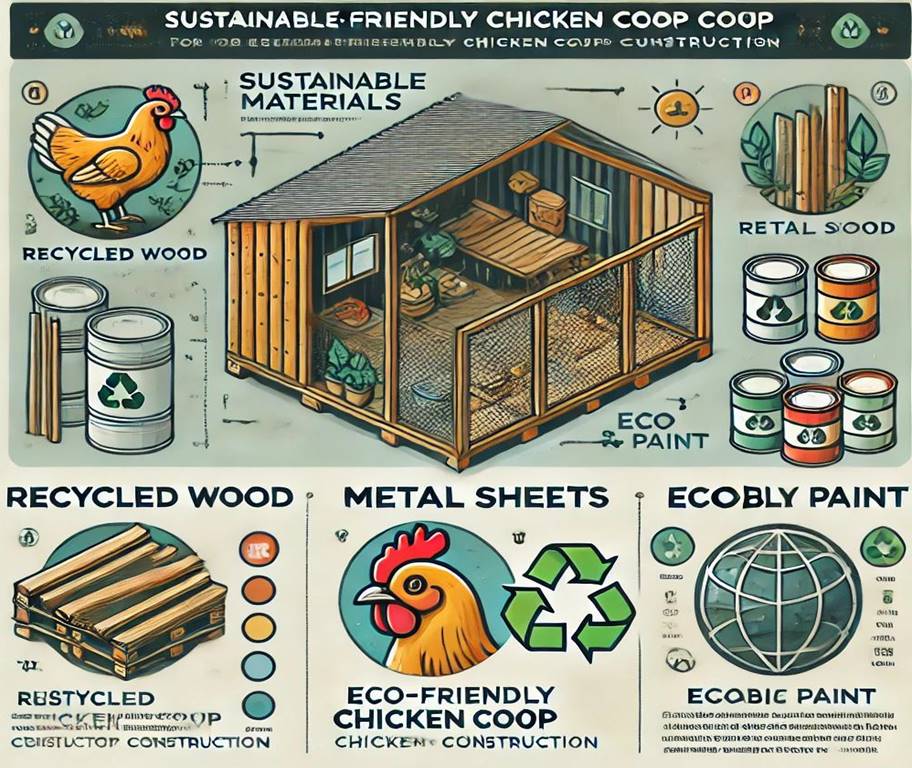
Infographic: Sustainable Materials for Eco-Friendly Chicken Coop Construction.
Using Recycled Materials: To minimize environmental impact, using recycled or repurposed materials is one of the best approaches when constructing a chicken coop. Consider using reclaimed wood, recycled metal sheets, or salvaged doors and windows. Reusing these materials not only reduces waste but also cuts down on construction costs. Ensure that any recycled materials used are free from harmful chemicals, as they can affect the health of your chickens.
Non-Toxic Paints & Finishes: When it comes to painting the coop, opt for non-toxic, eco-friendly paints and finishes. Conventional paints often contain volatile organic compounds (VOCs) that can harm both chickens and the environment. Use water-based, low-VOC, or natural paints to create a safer and healthier environment.
Insulation Tips: Effective insulation is essential for maintaining an optimal temperature inside the coop. Sustainable options include:
- Straw Bales: Straw bales are an excellent natural insulator. They are biodegradable, affordable, and widely available.
- Recycled Paper: Shredded recycled paper can be used in the coop’s walls to maintain warmth during colder months.
- Sheep’s Wool: Though less common, sheep’s wool is another effective and natural insulation option.
Energy Efficiency in the Coop
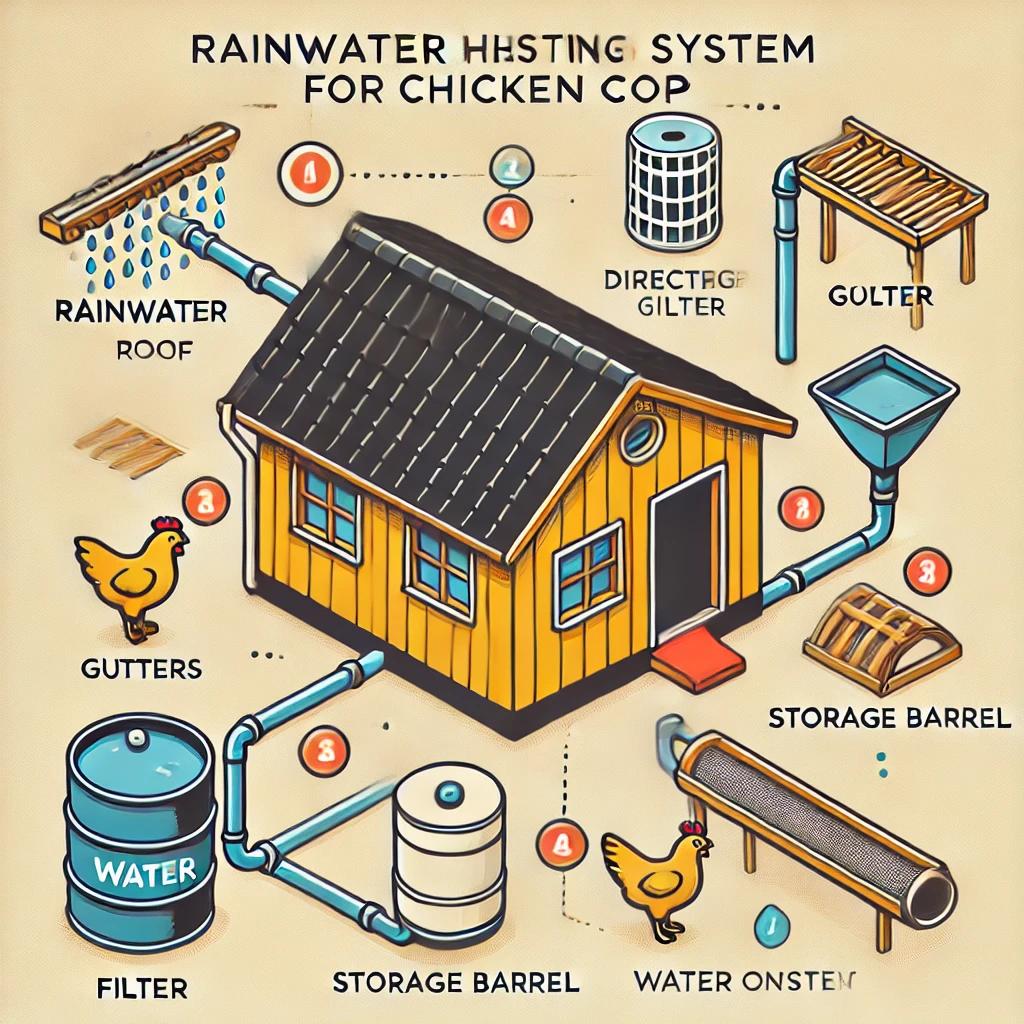
Diagram: Rainwater Harvesting System for Chicken Coop.
The diagram demonstrates the rainwater harvesting setup for a chicken coop, illustrating the collection process from the coop’s roof, through gutters, into a filter, and finally stored in a barrel. The diagram includes labels and icons for each component, highlighting the water flow to the chickens’ drinking system.
Solar-Powered Lighting: Incorporating solar energy into the coop’s design can significantly improve its sustainability. Solar panels can be installed to power lighting and even automated coop doors. Solar-powered lighting ensures the chickens have the right light exposure during shorter winter days, boosting egg production without increasing energy costs. Additionally, motion-sensor lights can be used around the coop’s exterior for nighttime security, conserving energy by activating only when needed.
Water Conservation: Sustainable chicken coops should prioritize water conservation. Implementing a rainwater harvesting system is a great way to collect and store water for the chickens. A simple setup involves connecting rain gutters to a storage barrel, which channels the collected water directly into a drinking system for the flock.
- Use rainwater filters to ensure the collected water remains clean and safe for the chickens.
- Visual Aid: Add a diagram illustrating the basic layout of a rainwater harvesting system connected to the coop.
Natural Heating and Cooling: To reduce energy consumption, focus on natural heating and cooling methods:
- Use natural ventilation by installing windows or vents on opposite sides of the coop, creating a cross-breeze that keeps the air fresh.
- Install thermal mass materials like stone or concrete near windows to absorb heat during the day and release it slowly at night.
Sustainable Coop Design Features
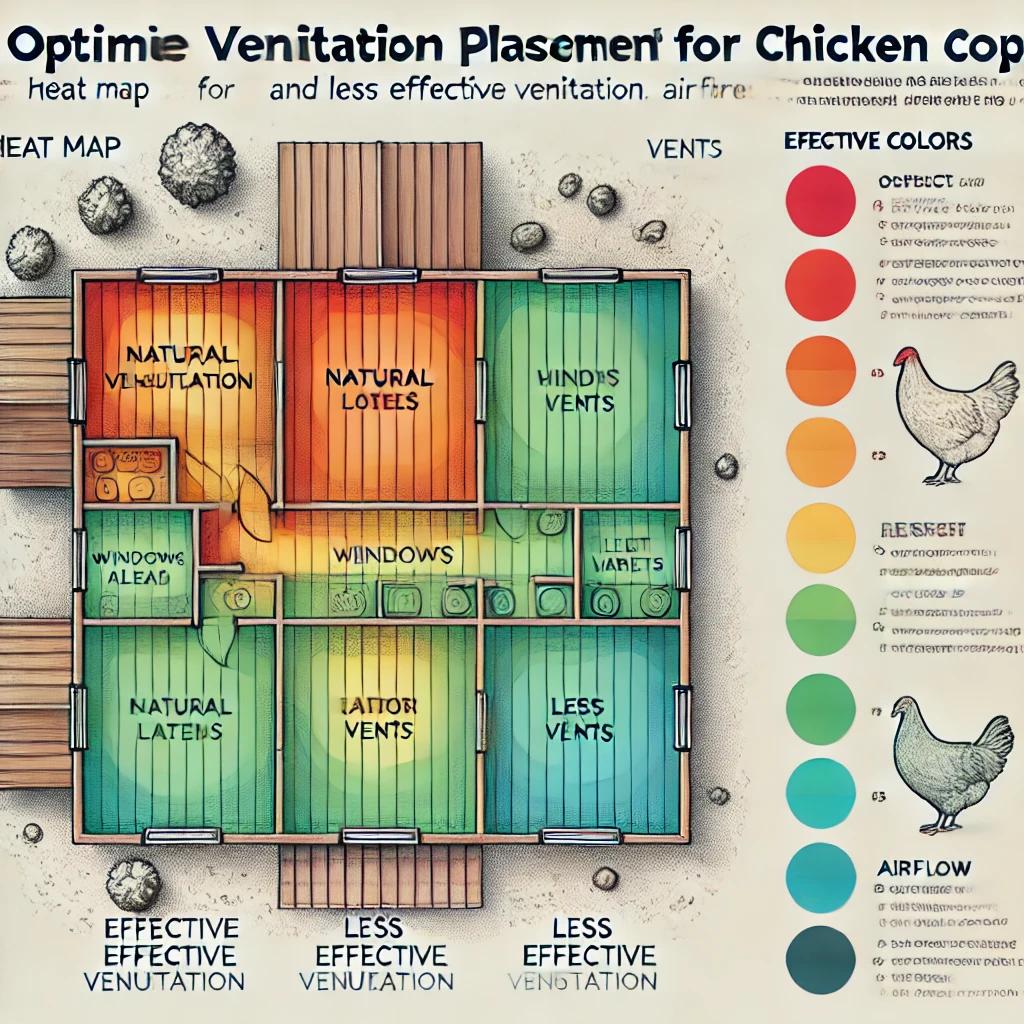
Heat map: Optimal Ventilation Placement for Chicken Coop.
Description: The heat map shows the layout of a chicken coop with shaded areas highlighting the best spots for natural ventilation, such as windows and vents. Arrows indicate the airflow directions, while colors distinguish between effective and less effective ventilation zones.
Natural Ventilation: Proper ventilation is crucial for maintaining a healthy, eco-friendly coop. Strategically positioned windows and vents ensure fresh air circulation, reducing moisture buildup and preventing respiratory issues among chickens. Opt for windows with adjustable louvers, allowing you to regulate airflow based on weather conditions.
- Positioning Windows: Place windows higher up on opposite walls to allow for cross-ventilation, which helps maintain a consistent and comfortable temperature inside the coop.
- Vent Covers: Use recycled mesh covers or bamboo screens to protect against predators while ensuring airflow.
Roosting and Nesting: Eco-friendly coop design also includes sustainable roosting and nesting solutions. Here’s how to do it:
- Roosting Bars: Install roosting bars made from natural, untreated wood. Set them at different heights to allow chickens to choose their preferred perch.
- Nesting Boxes: Construct nesting boxes from reclaimed wood or other recycled materials. Ensure each box provides adequate space for the hens, usually around 12×12 inches.
Predator-Proofing with Sustainable Materials: Protect your flock using sustainable predator-proofing techniques:
- Fencing: Use natural barriers like dense bushes or hedges around the coop to deter predators.
- Wire Mesh: Opt for eco-friendly wire mesh or recycled materials for fencing, ensuring it’s buried at least 12 inches below ground to prevent digging predators.
Coop Maintenance Tips
Compostable Bedding: Using compostable bedding materials in the coop not only ensures a clean environment but also promotes sustainability by turning waste into fertilizer. Consider using:
- Straw, hay, or wood shavings as bedding options. They are biodegradable, absorbent, and can be easily composted.
- Clean the bedding regularly to prevent moisture buildup, which can lead to respiratory issues.
Manure Management: Proper manure management is key to sustainable coop maintenance. Chicken manure is rich in nutrients and can be composted to create organic fertilizer for gardens. Here’s how to manage it:
- Deep Litter Method: Use a thick layer of bedding and allow it to accumulate with chicken droppings over time. The bedding acts as a natural composting agent, generating heat and reducing waste.
- Regular Composting: Collect manure and add it to a compost bin, turning it regularly to speed up decomposition.
Natural Pest Control: Pest management in the coop should focus on natural, eco-friendly solutions:
- Diatomaceous Earth (DE): Sprinkle DE around the coop and in nesting boxes to control mites and lice.
- Herb Bundles: Hang bundles of herbs like lavender, rosemary, and mint in the coop, as their scent naturally repels pests.
- For more on keeping chickens healthy, check out our Daily Routines for Healthy Chickens.
Case Study: An Eco-Friendly Chicken Coop in Action
To illustrate the benefits of sustainable coop practices, let’s look at a real-life example:
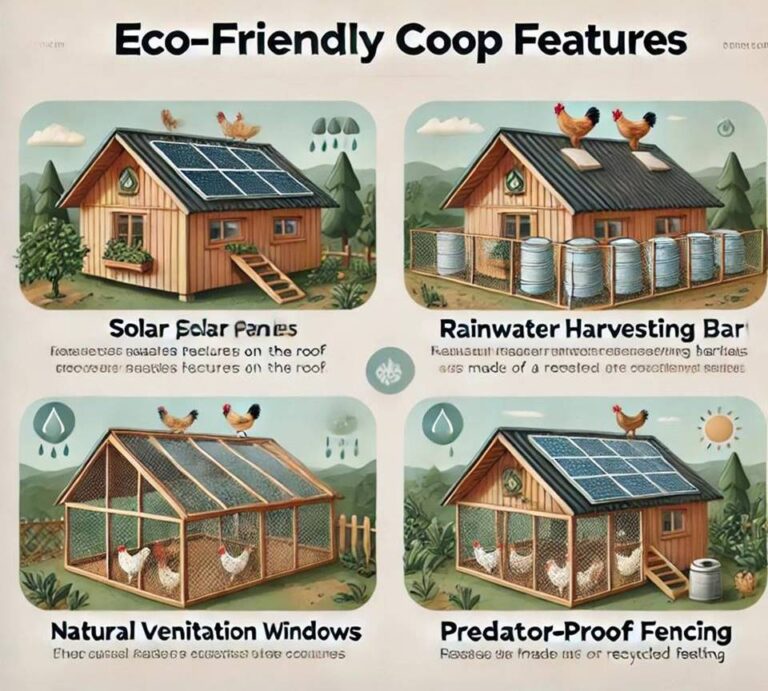
Carousel: Images of Eco-Friendly Coop Features.
Description:
The carousel showcases four sustainable features of a chicken coop:
- Solar Panels on the Roof – Generates clean energy for lighting and heating.
- Rainwater Harvesting Barrels – Collects and stores rainwater for chickens’ drinking needs.
- Natural Ventilation Windows – Provides fresh air circulation and maintains a comfortable temperature.
- Predator-Proof Fencing (Recycled Materials) – Ensures safety using sustainable materials.
The Smith Family’s Eco-Coop Project: The Smith family, owners of a small-scale organic farm, decided to build an eco-friendly chicken coop to reduce their farm’s environmental impact and improve the well-being of their flock.
- Design: They used reclaimed wood and metal sheets to build the coop, incorporating solar panels for lighting and rainwater harvesting for sustainable water use.
- Energy Efficiency: The coop was designed with south-facing windows to maximize natural sunlight, reducing heating needs during winter.
- Pest Management: The Smiths utilized natural pest repellents like diatomaceous earth and herbs, keeping the coop clean and pest-free without chemicals.
Benefits of Eco-Friendly Chicken Coops
Environmental Impact: Eco-friendly chicken coops have a significantly lower carbon footprint compared to conventional designs. By using recycled materials, reducing energy consumption, and incorporating sustainable practices, farmers contribute to environmental preservation. Avoid common errors with this guide: Top 10 Common Mistakes in Organic Chicken Farming and How to Avoid Them.
Improved Chicken Health: Sustainable coops provide better living conditions for chickens, promoting natural behaviors and reducing stress. Access to natural light, fresh air, and organic bedding contributes to overall chicken health and productivity.
Cost Savings: While the initial investment in sustainable materials and energy systems may be higher, the long-term savings are substantial.
- Reduced energy costs from solar power and natural ventilation
- Lower water bills due to rainwater harvesting
- Cost-effective composting solutions using manure and bedding
Conclusion
Building an eco-friendly chicken coop is a practical step toward sustainable farming. By using recycled materials, optimizing energy efficiency, and focusing on natural maintenance methods, farmers can reduce their environmental impact while improving flock health. Whether you’re new to organic farming or looking to upgrade your existing setup, following these sustainable tips can help you create a more eco-conscious and cost-effective chicken coop.

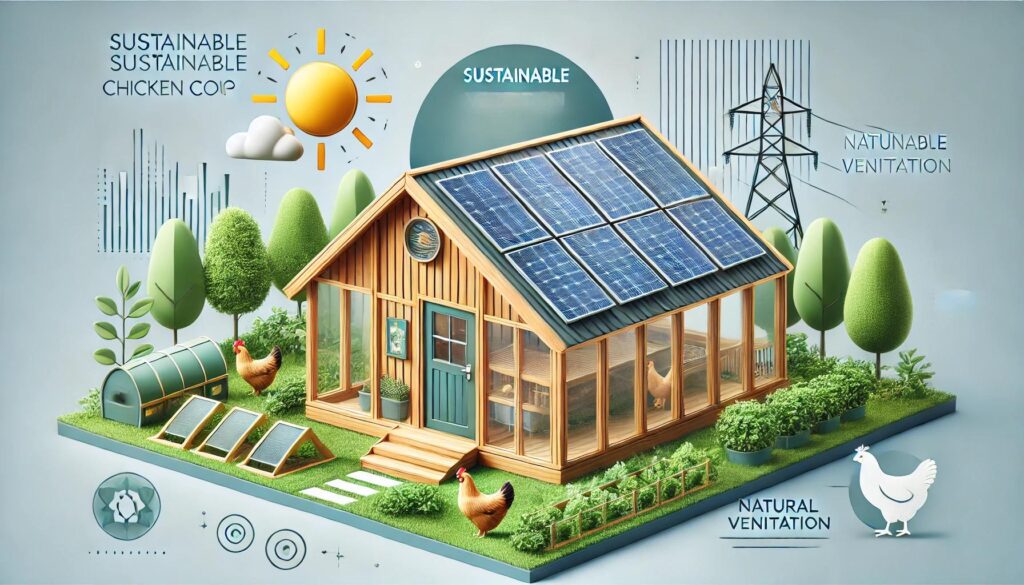
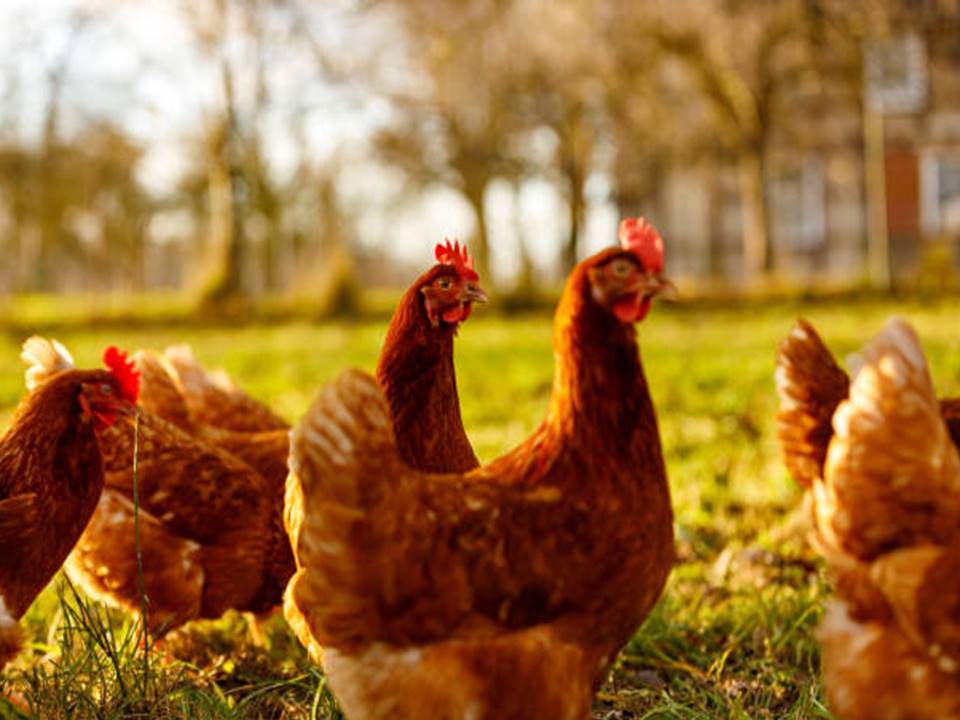
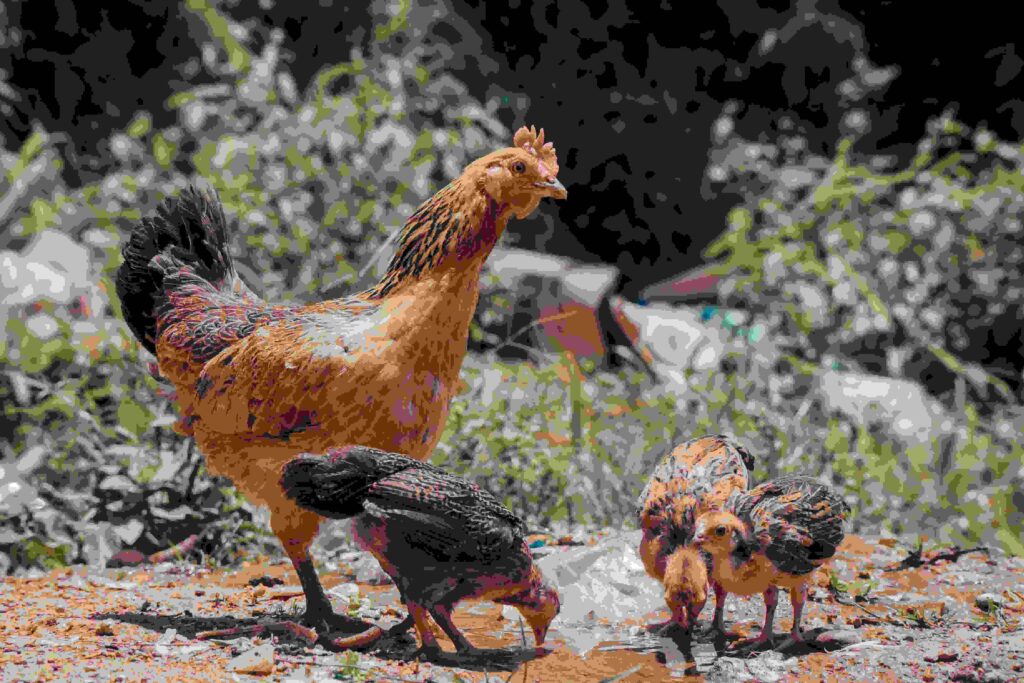
Eco friendly chicken coop is completely a new terminology for me. I could grasp it well. Nicely arriculated
Thank you very much
Well explained !
good to see